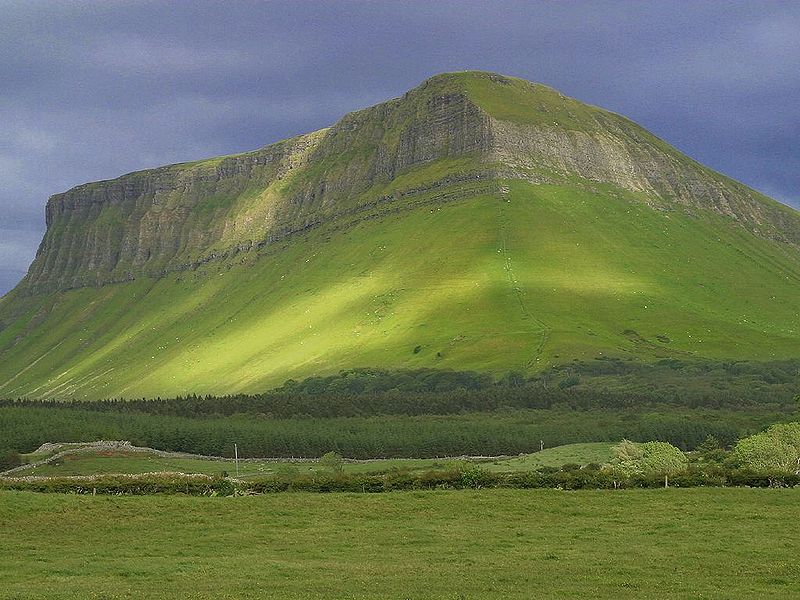How is everyone enjoying
their spring so far? Mine is going pretty good so far. Not a lot is
going on around here except our work on the Easter drama, “The
King on a Cross”, coming up in just a few weeks. As you
might recall if you've read my previous posts, there will be two
performances: one on Good Friday (the 18th) at 7 p.m. and
the other on Saturday the 19th at 2 p.m. Be sure to
contact me if you're interested in more details with the email
address at the bottom of this blog post.
Days Till
It is: 17 days till Palm
Sunday
It is: 22 days till the
Friday performance of “The King on a Cross”
It is: 24 days till
Easter Sunday
In the Spotlight
I can't tell you how exciting it has been for me as a Jurassic
Park fan over the past several months! News concerning the new
forth movie, Jurassic World, has been literally pouring into
the media. Earlier this week, two pictures of concept art have been
revealed! For those of you that don't know, concept art is pictures
made for movie-makers when they're trying to get their ideas for a
movie into visual form. Here are the two concept arts:
To me and many other Jurassic Park fans, these two pictures
seem to be portrayals of the new Visitor Center for the new Jurassic
World theme park. As you can see, the central rotunda is similar
to the one in the first movie, but more futuristic. This makes sense
when you remember that the movie will take place in 2015, while the
events of the first movie took place in 1993. Here's the Visitor Center from the first film and the concept art for the new film for comparison:
 |
| This is the Visitor Center from Jurassic Park. |
 |
| This is the concept art depicting the Visitor Center from Jurassic World. |
Since these pictures are dated 2013, it is possible that this is just
early concept art and it may not reflect what the Visitor Center in
the movie will really look like. Perhaps they've changed the design
of the buildings and/or the monorails since these were created. I
guess we'll have to wait till June 12, 2015 to find out!
That's not the only news in the Jurassic World universe –
two more actors' involvement with the film has just been confirmed.
The actors are Omar Sy and Jake Johnson. We don't know what parts they will be
portraying yet, but I can't wait to find out. The film's director,
Colin Trevorrow has also given us some more insight as to who will be
in the picture; there are three more yet-unnamed main female roles to
fill. And as if that wasn't great enough, you might recall that I
mentioned in a blog post several months ago that Universal
Pictures will start the production phase for this movie next
month! Finally, after over a decade Jurassic World is
finally going to see the light it deserves!
Topic of the Week by
Christian Ryan
Dinosaurs: you've seen them in books, movies, television programs,
video games, computer games, in museum halls, advertisement . . . and
even in toy shops! Perhaps these animals are so popular because we
humans are so drawn toward creatures or concepts we don't really
understand well. And compared to animals living today, we really
don't know too much about dinosaurs at all if you think about! But our knowledge of these beasts is increasing year by year;
there once was a time we knew even less about these beasts God
created: they were portrayed as nothing more than sinister, primeval,
evil, lazy, cold-blooded creatures destined for extinction. But that
was before a great revolution in dinosaur science known as . . . the
Dinosaur Renaissance (sometimes called the Dinosaur
Revolution). So how did we get from the older depictions of
dinosaurs to the ones we're familiar with today? Well, this three-part series of mine called "The Dinosaur Renaissance" will help you understand just how much about dinosaurs we've learned since they were first discovered!
The Dinosaur Renaissance is a period of time when scientists began to
learn new and amazing facts about these dinosaurs. But before we
learn about the Dinosaur Renaissance, there are some other facts you
should now about what happened before this time period, and
some basic dinosaur science in general. First off, the area of
science devoted to the study of dinosaurs and other ancient animals
and plants is called paleontology. Scientists who study paleontology
are called paleontologists. Fossils of dinosaurs – dramatic reminders of the several (billions of) lives lost in the water's of
Noah's Flood – have been uncovered from the ground for thousands of
years, but nowhere near the scale we dig them up today. This is
because we weren't looking for them and/or we didn't know what to
look for. Many early discoveries were thought to be the bones of
dragons (and people who believed that were actually pretty correct;
post-Flood dinosaurs inspired dragon legends before their
extinction). And some scientists of the 1600's actually believed that
dinosaur fossils were the bones of large elephants or even giant
humans! Today, we know the largest confirmed human was the giant
Goliath described in 1 Samuel in the Bible.
.jpg/800px-Laika_ac_Dino_Kingdom_2012_(7882288828).jpg) |
| Back in Victorian Times, depicting dinosaurs as lively and agile creatures was unheard of! |
But when did people actually learn that dinosaur bones were
completely different from animals we know today? Well, that all started
between 1815 and 1824, when a geology professor named Rev. William
Buckland collected the fossils of a dinosaurs later named
Megalosaurus. He can be credited as the first person to successfully
describe a dinosaur as a dinosaur and not something else (e.g. a giant elephant or giant human). The second fossils recognized as an animal new
to science were discovered by Mary Ann Mantell, the wife of English
geologist Gideon Mantell, in 1922. She showed the finds to her
husband, who had a great interest in fossils, and he published his
findings in 1825. These fossils were later named Iguanodon,
based on the similarities of their teeth to a modern iguana. In 1841,
an English scientist named Sir Richard Owen correctly identified
these two new creatures as animals that no longer existed and made a
new name for them, a name that strikes fear and amazement into our
hearts to this day: dinosaur, which means “terrible lizard”.
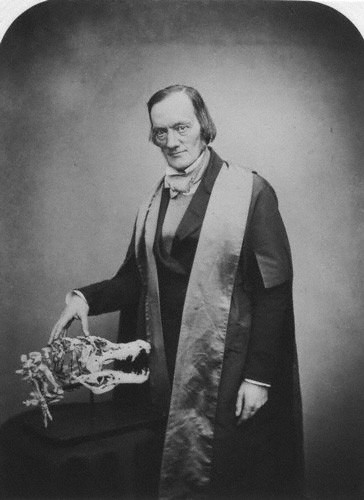 |
| Sir Richard Owen invented the name "dinosaur" in 1841. |
Soon, scientists and artists from the Victorian era began trying to
reconstruct these magnificent beasts . . . but their efforts were . .
. well, let's just say they weren't the most accurate! Sir Richard
Owen had the first reconstructions of the Iguanodon
depicted as a lizard and rhinoceros-like creature, with a horn on its
snout, a bulky body, pillar-like legs and a thick tail. One of the
very first Iguanodon sculptures ever made was, before it's
completion, used to hold around 20 scientists for a dinner! You can
imagine it was very uncomfortable!
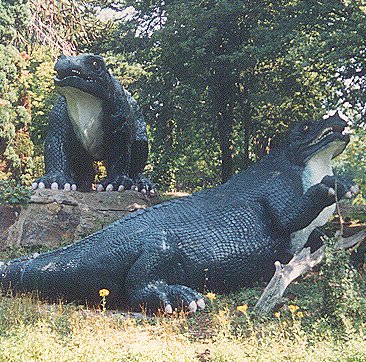 |
| These two Iguanodon scultptures, in Crystal Park, were some of the first depictions of dinosaurs ever made. |
Megalosaurus
didn't fare much better in its recreation! It was portrayed sort of
like a half crocodile/half rhinoceros type of animal that walked on
all four legs. Megalosaurus,
we now know, didn't really look anything like the initial depiction,
as you'll read later on. The first reconstructions of the two
mentioned species were placed in Crystal Park, right outside of the
the Crystal Palace. The palace burned down since then, but the
dinosaurs can and are often still visited there to this day! It
wasn't long before the first reconstructions of Iguanodon
and Megalosaurus were
obsolete. (However, even the initial Iguanodon
wasn't the worst mistake paleontologists have made over the years;
one scientist we'll learn about in the "The Dinosaur Renaissance pt. 2"
placed an extinct reptile's head where the tail should have gone!)
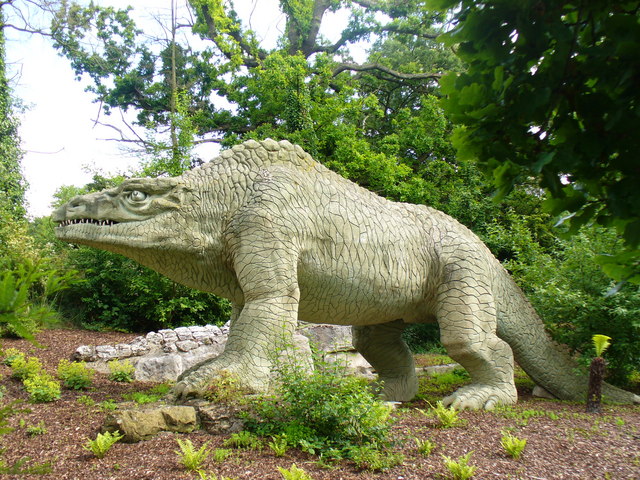 |
| Megalosaurus was the first dinosaur ever correctly described as a dinosaur. This sculpture is also located in Crystal Park among other Victorian recreations of extinct reptiles. |
More
and more dinosaurs began being discovered, not only in England, but
also in the America's. Before the next big dinosaur discovery,
scientists believed all
dinosaurs walked on four legs. But in 1858, this all changed with the
new discovery of Hadrosaurus,
a large hadrosaur, or duck-billed dinosaur, in New Jersey. It was
clear, based on the skeleton, that the dinosaur could walk in a bipedal fashion, meaning it could walk on four legs.
And scientists were about to get a BIG shock coming from a dinosaur
they already knew about: workers in a Belgian coal mine discovered 38
specimens of Iguanodon in
1878. Many of them were complete or almost-complete. This made
scientists realize that their original reconstruction of Iguanodon
was wrong – now that they had more fossils, they knew that, like
Hadrosaurus, Iguanodon
could also walk on two legs. That wasn't the scientists' only surprise: thanks to all of the new specimens discovered, they learned that the supposed “nose horn” of
Iguanodon was really a
thumb spike (only one spike was found on the original specimen in
1822 and it wasn't attached to the dinosaur's hand); this dinosaur
had a spike on each hand that would have been used for defense and/or
to help it forage.
Scientists
kept digging more and more dinosaur fossils out of the ground. In
fact, even to this day, there are more fossil discoveries than there
are scientists to actually study them! By the late 1800's, dinosaurs
were becoming very popular . . . but this isn't the end of our tale.
In fact, by the late 1800's, the tale of dinosaur discoveries was
only just beginning!
I hope everyone enjoyed reading the first article in The Dinosaur
Renaissance series. Please come back next week for my co-author Joy's
latest article and, the week after that, we'll continue with my
series and see what happens when scientists get a little too anxious to
discover more dinosaurs!
PS 1: To post a comment
(this is highly encouraged), please simply click the post you wish to
comment on, scroll to the bottom of the page and put what you wish to
say or ask in the comment box. Then in the box below the comment box
choose who you’re going to comment as. And then click preview
or publish. If you aren’t signed into Google, you’ll be
asked to type in a word and a number in the space provided. Type the
word, put a space and then put the number. Then your comment is on
the blog!
PS 2: Have a puzzling question about
animals (including dinosaurs), myself, my latest book, my stop-motion
movies, Creation or etc? Please post your question as a comment or
send me an email at animaladventures@aol.com.
PS 3: What’s the new in the news?
Check it out at SMILEY’S
NEWS.


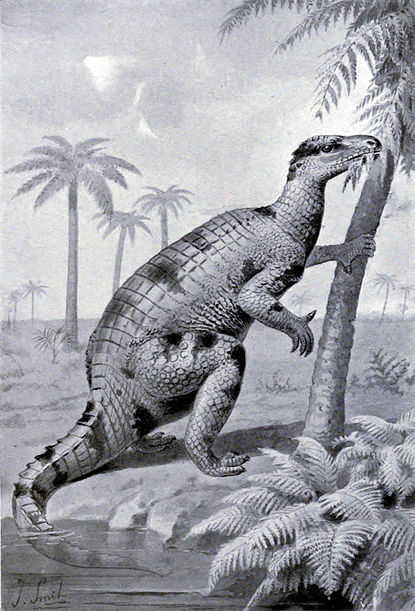


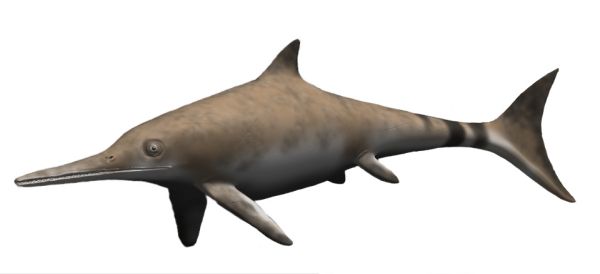


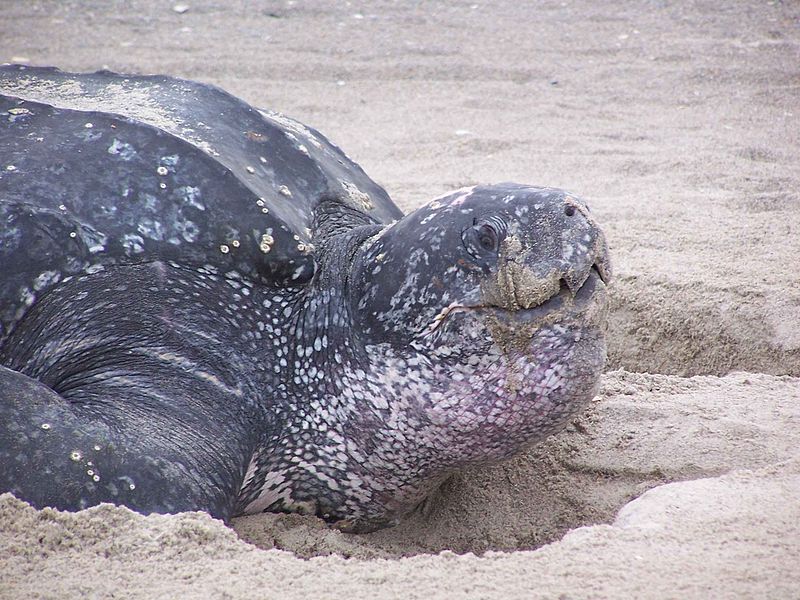





_(umaD0026).jpg)
.jpg/800px-Greenlandic_melt_water_stream_(7638364560).jpg)

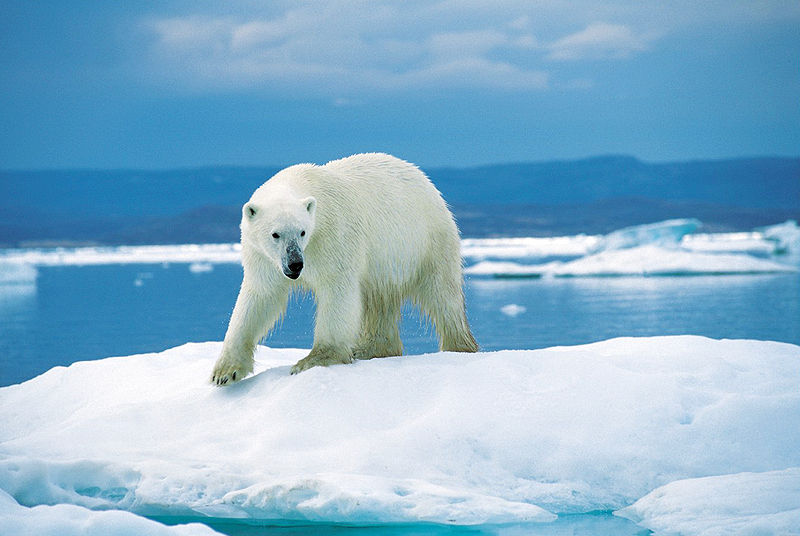


.jpg)

